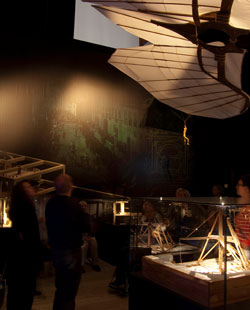
An exhibition for all
:And There Was Light is designed to appeal to a wide range of visitors, while also allowing those with a good level of knowledge to learn more.
The names Leonardo da Vinci, Michelangelo and Raphael alone will attract a large number of visitors. As the exhibition covers architecture, technology and various scientific subjects as well, it will be of interest not only to people interested in art.
Workshops are also planned, where visitors can try their hand at art forms like painting and sculpture.
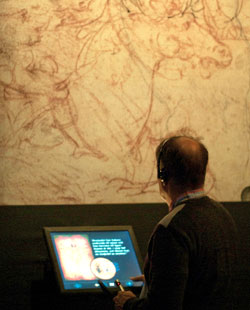 A unique exhibition
A unique exhibition
The Renaissance was one of the most revolutionary periods in the history of the world. It was hugely important to the development of science, culture, architecture, art, music and civic life. Today, 500 years later, we still see the traces of the Renaissance around us.
:And There Was Light presents the Italian Renaissance on the basis of a number of decisive events and people of great importance to its development. The three masters appear here together in an exhibition that shows everything from models of inventions and sculptures to famous, priceless original works of art. Modern technology is also used to tell the story of the Italian Renaissance and how the era and the people who lived in it still exert an influence on us today.
With large spaces and a high ceiling, Eriksbergshallen in Gothenburg is perfect as the first exhibition space for :And There Was Light. Beforehand, the venue will be adapted both for a large influx of visitors and to meet the rigorous security needed to cover exhibits of this type. After having been shown in Sweden, the exhibition will tour the world for several years
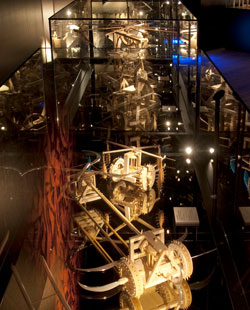 Three Renaissance rivals
Three Renaissance rivals
Leonardo da Vinci, Michelangelo and Raphael are three of the greatest artists in history. But they were also people with ideas and visions that reached far beyond the world of art. They were also bitter rivals, competing for both commissions and fame. All three became immortal.
Every now and then, on rare occasions, an exhibition of one of these three Italian Renaissance artists is organised somewhere in the world. There is always enormous interest in such an event. The name of the artist, the priceless works and all the publicity make people from around the world queue outside museums and galleries.
The three rivals are now working and travelling the world together. This is the first time this has happened and the only time in the foreseeable future. Probably the only time in our lifetime.
The exhibition :And There Was Light will travel the world for eight years, starting in Gothenburg, Sweden on 20 March 2010.
Be seen with the masters
 |
 |

Leonardo da Vinci
Leonardo da Vinci (1452–1519) was the oldest of the three masters. He took up an apprenticeship with a sculptor and painter in Florence at a young age and is said to have surpassed his teacher in the art of painting very quickly.
If anyone can be called a universal genius, it is Leonardo. He was not only one of the best painters the world has ever seen. He was also an inventor, an architect, an engineer and a scientist, in most cases with ideas that were way ahead of their time. As if this was not enough, he is also said to have been physically strong and to have had a good singing voice and an attractive appearance.
Although there are very few authentic paintings by Leonardo, he was responsible for some of the world’s most brilliant works. The Mona Lisa and the fresco the Last Supper are the best known.
|
 |

Michelangelo
Michelangelo Buonarroti (1475–1564) was a master with the brush but first made his name as a sculptor. Michelangelo’s sculptural masterpiece Pietà is in St. Peter’s Basilica in Vatican City and his four-metre tall statue of David, carved from a single piece of white marble, is in Florence.
Michelangelo faced his greatest challenge as a painter in 1508. Pope Julius II commissioned him to decorate the entire ceiling of the Sistine Chapel with frescoes. It took Michelangelo four years to complete the work and the paintings have since (for nearly 500 years) been some of the most powerful, outstanding works in the history of art.
|
 |

Rafael
Raffaello Sanzio (1483–1520) was just as prominent an artist as Leonardo and Michelangelo, but lived a considerably quieter, more modest life. He was the youngest of the three masters, worked in Florence in the early 16th century and was heavily influenced by his two older compatriots. Among other things, Michelangelo’s paintings on the ceiling of the Sistine Chapel made a large impression on Raphael.
Raphael also painted frescoes in the Vatican. His mural the School of Athens portrays major philosophers such as Plato, Aristotle and Pythagoras and one of the men in the painting is said to be Michelangelo himself.
Raphael was only 37 when he died, but despite his short life he has exerted a major influence on art. The Italian painter and art historian Vasari wrote the following about Raphael: “While we may term other works paintings, those of Raphael are living things; the flesh palpitates, the breath comes and goes, every organ lives, life pulsates everywhere.” |
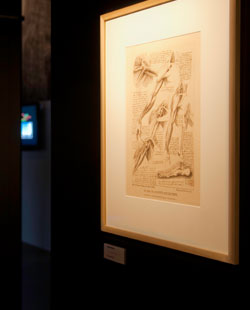 Experience the struggle between the masters
Experience the struggle between the masters
:And There Was Light is an extensive exhibition. The insurance value of the original works is around EUR 100 million.
The sections of the exhibition cover different periods of time. The three masters are presented on the basis of what they did in each period, where they worked and how they competed as rivals for commissions and attention. Other important Renaissance individuals and their works or actions also figure in the exhibition.
Everything is illustrated in an educational yet exciting manner using modern technology, multimedia, models of well-known sculptures, reproductions of works of art and three-dimensional models of inventions and buildings etc.
One section contains famous original works of art (paintings, sculptures and drawings) from the late 15th and early 16th centuries. A few original works of art by later artists who were inspired by the three masters are also shown here.
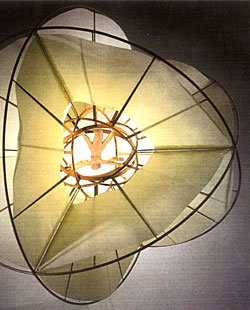 International team of experts
International team of experts
An international team of experts from the world of Italian art and culture is behind :And There Was Light. The team includes some of the world's leading specialists in Italian Renaissance art, specialising in the three masters.
The people on the team of experts have worked on high-level international art and culture projects for decades. Their CVs are impressive and they possess all the knowledge and experience required to create an interesting, large-format exhibition. Last but not least, they have a unique international network of contacts. This is essential for the ability to borrow the original works for the exhibition.
With this team of experts on the project, it has all the requirements to create an exhibition that will attract a wide range of people, as well as meeting the expectations of visitors who already have a good level of knowledge.
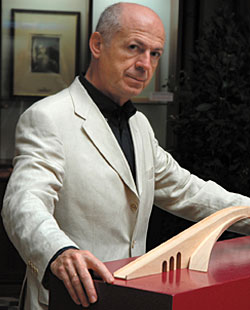 Alessandro Vezzosi – Artistic Director
Alessandro Vezzosi – Artistic Director
An art critic, interdisciplinary expert and an internationally-renowned specialist on Leonardo Da Vinci, Alessandro Vezzosi was born in Florence in 1950 but lives in Vinci, where he is the director of the Museo Ideale Leonardo Da Vinci (since 1993), with the nascent project
“Giardino di Leonardo e dell’Utopia”.
Since 1972 he has been the author and curator of hundreds of exhibitions, publications, conventions and conferences on Leonardo Da Vinci and the Renaissance, the giardini delle meraviglie, contemporary art and design, from the United States to Japan.
He has also taught creative museology at the University of Design in Reggio Emilia.
His experience of touring exhibitions with original works by Leonardo began in 1980, from Vinci to the University Art Museum, Berkeley and other museums in the U.S.
In 1989 he edited the first CD-ROM
“Leonardo. La Pittura Digitale”.
In 1994 he edited the first multimedia edition of Leonardo’s Codex Leicester, in the Bill Gates Collection, up until the exhibition with the original manuscript in Tokyo in 2005.
In 2001 he became involved in exhibitions on Raphael and Michelangelo: from
“Raffaello e l’idea della bellezza” to
“I disegni di Leonardo, Raffaello e Michelangelo” in Japan, presented by Claudio Strinati.
His books have been translated by publishers in 18 countries and into 16 languages.
In 2008 he was the author, with the collaboration of Agnese Sabato and the introduction by Carlo Pedretti, of the large volume
“Leonardo Infinito”, considered to be one of the most beautiful and significant works ever published on the Renaissance genius.
In Sweden he was the curator of the exhibition
“Figure della mente” in Malmö in 1986; the scientific secretary of the exhibition
“Leonardo’s broar” in Malmö, Stockholm and Gothenburg from 1993; the exhibition
“La Toscana di Leonardo” in Stockholm in 1999. One of his books was published in 1997 in Swedish by the Stockholm publisher Berghs (
“Leonardo da Vinci. Konsten och vetenskapens mästare”).
In his capacity as Artistic Director, he established the guidelines for :And There Was Light and will ensure that the exhibition will be both representative and absorbing for a wide range of visitors.